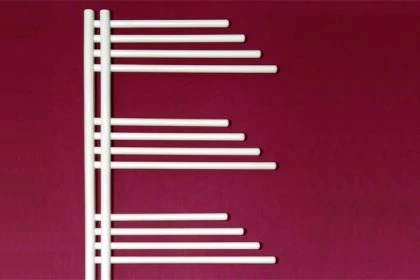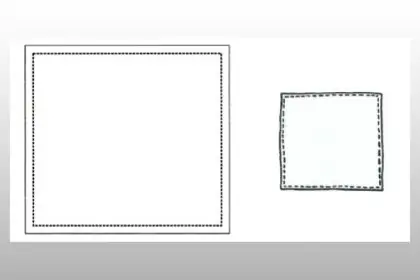The Advocate General has opened the door for copyright protection in industrial design. In the Opinion of the Advocate General, the creative aspect is decisive for the claim to copyright protection, which should not be subject to increased requirements. This also applies to objects that are already protected as a registered design.
Fashion model under copyright protection
 The focus was on the right of reproduction for clothing. Cofemel (Portugal) designs, manufactures and markets under the trade mark Tiffosi models of jeans, sweatshirts and T-shirts. The defendant G-Star Raw CV (Netherlands) designs, produces and markets the Arc and Rowdy models under various brands, including jeans, sweatshirts and T-shirts.
The focus was on the right of reproduction for clothing. Cofemel (Portugal) designs, manufactures and markets under the trade mark Tiffosi models of jeans, sweatshirts and T-shirts. The defendant G-Star Raw CV (Netherlands) designs, produces and markets the Arc and Rowdy models under various brands, including jeans, sweatshirts and T-shirts.
G-Star saw its copyrights on the Arc and Rowdy models as infringed by the applicant. In this case, which was heard before Portuguese courts, G-Star was the first to succeed, but Cofemel the next.
The Supreme Court in Portugal, the Supremo Tribunal de Justiça, requested in this case the European Court of Justice (ECJ) to interpret the conflict between copyright and design law, formally to interpret Article 2(a) of Directive 2001/29:
Can registered designs – formerly designs – be protected by copyright, even if they do not have a special artistic character?
And how much discretion does the EU Member States have to determine the conditions for granting copyright protection to designs?
Industrial design and design works – functional or original?
On the one hand, the utilitarian and functional character of the objects of applied art calls into question their ability to be protected by copyright, as Advocate General Szpunar specified in his Opinion. In addition, such objects are normally intended to be produced industrially in large quantities.
On the other hand, however, some objects of applied art undeniably have a high degree of originality, the Advocate General made it clear that this also applies to clothing, just think of haute couture. It is therefore not justified to exclude art objects applied a priori from copyright protection solely because of their functional character.
Therefore, many national legal systems – especially for applied arts such as industrial design, design works and fashion – provide for possibilities to grant copyright protection only for designs of high artistic value; in Germany this was the so-called step theory until 2013 (a design object can only be protected under copyright law if the average design clearly outperforms the average design), which is now being abandoned.
Design protection and copyright protection – cumulative, but not equal
The protection of an object is in principle possible both as a registered design – formerly a design patent – and also simultaneously under copyright protection. This may be relevant because the protection classes differ both in the scope of protection and in the running time. Copyright protection is normally valid for up to 70 years after the death of the respective author, but the term of protection for a registered design ends after 25 years at the latest.
Essential differences between the two forms of protection:
- Concept of “visual overall impression” from design law does not exist in copyright law
- Different assessment of the infringement of exclusive rights
- Design protection protects investments in the creation of designs from imitation by competitors
- Copyright mostly has a low originality threshold, every created work counts.
Term “work” in Union law
The Advocate General first considered the term “work”, which is an independent term of Union law and is not defined by a corresponding directive. Already last year, the European Court of Justice (ECJ) ruled in its sensational und leading ruling on taste under copyright protection that the term work designates an object of protection that must be identifiable with sufficient accuracy and objectivity. Moreover, according to the case law of the European Court of Justice, a work eligible for protection must be an intellectual creation and original.
Advocate General Szpunar stressed as a matter of urgency the uniformity required in the application of Directive 2001/29 throughout the territory of the Union. Therefore, a uniform term of work and thus the “intellectual creation” must apply to all types of work, regardless of the degree of artistic design. All national regulations must also be designed in such a way that general principles apply, such as the exclusion of ideas from copyright protection. A work that can be protected must be tangible with the senses and have a perceptible design. In common law (above all UK and USA), it is also true that the works must be recorded on a medium, literally “fixed in a tangible medium”.
A possible inflation of copyright-protected design objects is considered unlikely by the Advocate General. Not every visual aspect of an object of utility can be protected by copyright. Advocate General Szpunar decided that the creative aspect was decisive, but that no increased requirements should be placed on it. Article 2 of Directive 2001/29, as interpreted by the ECJ, precludes the protection of designs by copyright only if they have an enhanced artistic character. Moreover, national courts should not be able to apply the specific criteria for design protection to copyright protection.
The Advocate General also gave his opinion on the causal copyright dispute concerning the fashion models. Characteristics such as the “colour scheme” or the “position of bags on the stomach”, the imitation of which is alleged against Cofemel and Others, must be regarded as adaptations. The Advocate General considers that these are ideas with different means of expression or even as functional solutions which should not fall under the protection of copyright. However, that assessment is a matter for the national court.
Would you also like to protect your design or your fashion?
Our patent attorneys and attorneys at law are experienced and highly qualified in all areas of intellectual property law, both nationally and internationally.
If you are interested, please contact us.
Sources:
Opinion of General Advocate EU:C:2019:363
Image:
Free_Photos /pixabay.com / CCO License








Leave a Reply